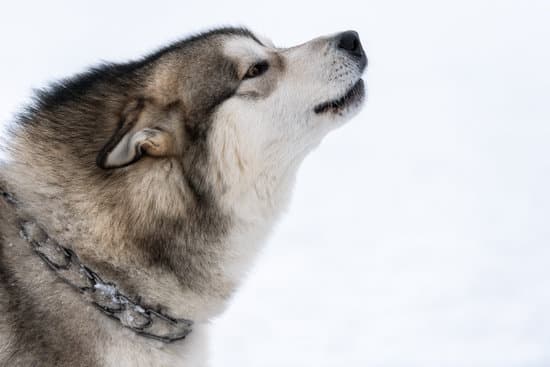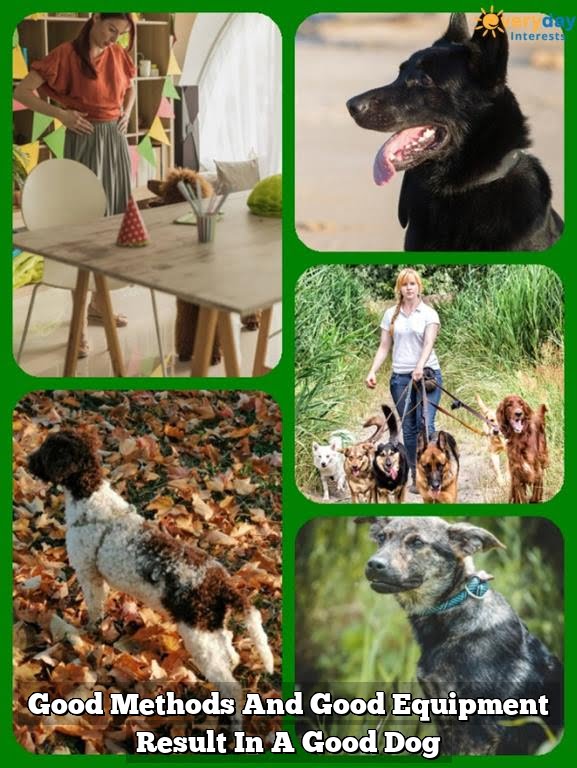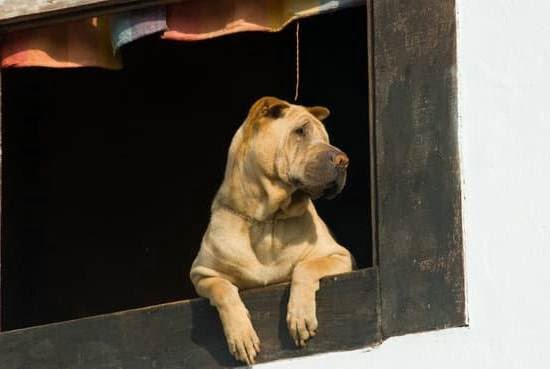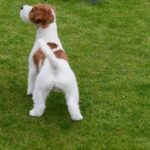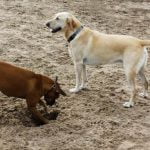When it comes to hunting, having a well-trained and reliable coon dog can make all the difference. The ability of these dogs to track scent, tree raccoons, and communicate effectively with their handlers is crucial for a successful hunt. Training a good coon dog not only enhances their natural instincts but also ensures they can perform at their best in the field.
A well-trained coon dog is an invaluable hunting partner. These dogs possess certain key characteristics and traits that make them excellent for tracking and hunting raccoons. However, it takes time, patience, and dedication to develop these skills in your canine companion.
By understanding the breed-specific traits of coon dogs and preparing yourself with the necessary equipment and supplies, you lay the foundation for successful training. From there, socializing your coon dog puppy helps shape their behavior and teaches them how to interact appropriately with people and other animals.
Basic obedience training is essential for effective communication between you and your coon dog. Teaching them commands such as sit, stay, come, and heel establishes control over your dog’s actions during hunts. Additionally, introducing scent trails early on can help develop their tracking skills, as they learn to follow specific scents left behind by raccoons.
Throughout this article series on “How to Train a Good Coon Dog,” we will explore various training techniques and methods to help you develop a well-rounded hunting companion. From building stamina and endurance to fine-tuning hunting skills like treed identification, we will cover each step in detail.
Join us as we take this rewarding journey together – celebrating successes along the way – toward achieving a strong bond with your well-trained coon dog. Whether you’re an experienced hunter or new to the world of coon dogs, this article series will provide valuable insights into transforming your furry friend into an exceptional hunting partner.
Understanding the Coon Dog Breed
Before embarking on the journey of training a good coon dog, it is vital to have a thorough understanding of the breed. Knowing the key characteristics and traits to look for in a potential coon dog will not only set you up for success but also ensure a rewarding and fulfilling hunting experience. Here are some important factors to consider when selecting a coon dog:
- Scenting ability: A coon dog’s primary job is to track down raccoons by following their scent. Therefore, it is crucial to choose a dog breed with excellent scenting ability. Breeds such as Treeing Walker Coonhounds, Bluetick Coonhounds, and Black and Tan Coonhounds are known for their exceptional tracking skills.
- Temperament: It is essential for a coon dog to possess the right temperament for hunting. They should be alert, focused, and confident while remaining obedient and responsive to commands. Coon dogs should exhibit persistence, determination, and an unwavering drive to hunt.
- Physical attributes: Coon dogs need to have certain physical attributes that contribute to their success in hunting. They should be agile, athletic, and possess good endurance. Their barks should also be distinctive, loud, and easily audible from a distance.
To identify these characteristics in a potential coon dog, it is recommended to work with reputable breeders who specialize in producing top-quality coon dogs. These breeders can provide valuable insights into the breed’s lineage and help match you with a suitable coon dog based on your specific needs and preferences.
Once you have chosen your potential coondog based on these key criteria, it is essential to establish a trusting relationship with your new companion before diving into training. Building trust through bonding activities such as playtime and positive reinforcement will lay the foundation for a successful training journey. Remember, a well-selected coon dog with the right characteristics and traits will significantly contribute to the overall success of your hunting adventures.
Pre-Training Preparation
Training a good coon dog requires proper preparation and the right equipment. Before starting any training, it is important to gather all the necessary supplies to ensure a successful training experience. Here is a list of essential equipment and supplies needed for coon dog training:
- Dog Collar and Leash: A strong collar and leash are essential for controlling your coon dog during training sessions. Opt for a collar that fits comfortably and securely around your dog’s neck, and choose a leash with appropriate length and durability.
- Training Vest or Harness: Consider using a training vest or harness to attach necessary tools such as tracking lines or bells. This helps in teaching your coon dog to associate certain equipment with specific tasks.
- Tracking Lines: Tracking lines are long, strong ropes used to simulate scent trails during training sessions. They allow you to guide your coon dog’s nose along the invisible path of the trail.
- Coon Hide or Scented Training Aid: Coon hides or scented training aids are used to introduce the scent of raccoons during scent detection training. These aids help your coon dog become familiar with the natural smells associated with hunting.
- Treats and Rewards: Positive reinforcement is crucial in coon dog training. Stock up on tasty treats that will motivate and reward your dog for performing desired behaviors.
- Clicker: A clicker is a handheld device that makes a distinctive sound when pressed, signaling to your dog that they have done something correctly. It can be an effective tool for marking desired behaviors.
- Crate or Kennel: Having a crate or kennel provides a safe space for your coon dog during rest periods or when you cannot directly supervise them. It also aids in potty training and helps establish routine and structure.
In addition to these basic supplies, it is important to create a designated area for training sessions where distractions can be minimized, allowing your coon dog to focus on learning. Remember, having the right equipment and supplies sets the foundation for effective coon dog training and enhances the overall experience for both you and your furry hunting partner.
Establishing a Strong Foundation
The Importance of Socialization
When it comes to training a good coon dog, one of the most crucial aspects to focus on is socialization. Socializing your coon dog puppy from an early age is essential for developing well-rounded behavior.
This process involves exposing your puppy to various people, animals, and environments to help them become comfortable and confident in different situations. By properly socializing your coon dog, you can prevent behavioral issues in the future and ensure that they are well-behaved hunting companions.
Introducing Your Coon Dog Puppy to People
To start socializing your coon dog puppy, it’s important to introduce them to a wide range of people. Invite friends, family members, and neighbors over for supervised visits so that your puppy can become familiar with different faces and personalities. Encourage gentle interactions and provide positive reinforcement when your puppy behaves well around new people.
It’s also beneficial to take your coon dog puppy out into public places where they can encounter strangers, such as parks or pet-friendly stores. Always remember to prioritize safety and keep interactions positive and rewarding.
Exposing Your Coon Dog Puppy to Different Environments
In addition to introducing your coon dog puppy to various people, exposing them to different environments is equally important during the socialization process. Take your puppy on outings to different locations such as forests, fields, or even urban areas so they can experience new sights, sounds, and smells.
Gradually expose them to these environments while providing reassurance and rewards for calm behavior. This will help build their confidence and adaptability, ensuring that they remain focused during hunting trips in diverse settings.
By establishing a strong foundation through proper socialization, you are setting the stage for a well-rounded coon dog who is ready for training in other areas such as obedience commands and tracking skills. Remember that socialization is an ongoing process that should continue throughout your coon dog’s life, reinforcing positive behaviors and introducing them to new experiences.
With a well-socialized coon dog, you can have confidence in their behavior and enjoy a stronger bond with your hunting partner.
Basic Obedience Training
The Importance of Basic Obedience Training
Basic obedience training is a crucial step in the process of training a good coon dog. By teaching your coon dog essential commands, you establish clear communication and ensure that they obey your instructions promptly. This not only improves their behavior and manners but also enhances their safety during hunting trips. Basic obedience training lays the foundation for more advanced skills and helps create a strong bond between you and your coon dog.
Teaching Essential Commands
When it comes to basic obedience training for coon dogs, there are several essential commands that you should focus on. The following commands are fundamental for effective communication with your coon dog:
- Sit: Teaching your coon dog to sit on command is one of the first steps in obedience training. Start by holding a treat close to their nose and gradually raise it above their head. As they follow the treat with their eyes, their bottom will naturally lower into a sitting position. Once they sit, give them the treat and praise them.
- Stay: Teaching your coon dog to stay is essential for their safety during hunting trips or when encountering potential dangers. Begin by telling them to sit, then hold up your hand in front of them as if signaling “stop.” Take a step back while saying “stay” firmly. If they remain in place, reward them with praise or a treat.
- Come: Recall is crucial for any hunting dog, as it ensures they return to you when called. Start by kneeling down and opening your arms wide while saying “come.” Encourage them to come towards you using an excited tone of voice or by showing them a treat as motivation.
- Leave It/Drop It: These commands are important in situations when your coon dog comes across something they shouldn’t have, such as harmful objects or non-target animals during hunts. Teach them the “leave it” command by offering them a treat in a closed fist and saying “leave it.” When they stop trying to get the treat, reward them with praise and give them another treat.
For the “drop it” command, use a toy or object that they like to hold onto. Offer them a more enticing treat while saying “drop it,” and when they release the object from their mouth, reward them.
Consistency and Positive Reinforcement
Consistency is key when training your coon dog in basic obedience commands. Always use the same words and gestures for each command and expect them to respond accordingly. Additionally, positive reinforcement is crucial in obedience training.
Reward your coon dog immediately after they perform a desired behavior correctly, whether it be with treats, praise, or affection. This positive association will motivate them to continue obeying commands and make the training process more enjoyable for both of you. Remember to keep training sessions short, frequent, and fun so that your coon dog remains engaged and excited to learn.
By focusing on basic obedience training and teaching essential commands, you are setting your coon dog up for success in their hunting career. Establishing effective communication through these commands not only improves their behavior but also enhances their safety during hunts. As you progress in your coon dog’s training journey, remember to stay patient, consistent, and reinforce positive behaviors for best results.
Developing Tracking Skills
One of the most important skills for a coon dog is the ability to track scents and follow trails. This skill is crucial for successful hunting, as it allows the dog to locate and track raccoons. In this section, we will discuss how to develop tracking skills in your coon dog by introducing scent trails and teaching them to follow them.
To start developing your coon dog’s tracking skills, you will need to introduce them to different scents. Begin by using a scent that is familiar to the dog, such as their own bedding or an item that carries their scent. Place this object at the end of a short trail in your backyard or a controlled environment. Encourage your dog to sniff the object and reward them with praise or treats when they find it.
As your coon dog becomes comfortable with following these short scent trails, gradually increase the difficulty level by using different scents and making the trail longer. You can use raccoon urine or scent drags designed specifically for training purposes. Start with shorter trails and gradually increase the length as your dog becomes more proficient.
It is important to remember that every coon dog is different, and some may take longer than others to develop their tracking skills. Be patient and consistent with your training efforts, providing positive reinforcement whenever your dog successfully tracks a scent trail.
| Tips | Description |
|---|---|
| Start with familiar scents | Use objects with your coon dog’s own scent initially |
| Increase difficulty gradually | Use different scents and longer trails as your dog progresses |
| Positive reinforcement | Reward your coon dog with praise or treats when they successfully track a scent trail |
| Patient and consistent training | Every coon dog is different, so be patient and provide consistent training to develop tracking skills effectively |
By following these tips and consistently practicing scent trail exercises, you can help your coon dog develop strong tracking skills. This will greatly enhance their ability to locate and follow raccoons during hunting trips, increasing your chances of a successful hunt. Remember to always celebrate your dog’s successes and enjoy the bonding experience that comes with a well-trained coon dog.
Advanced Training Techniques
Coon hunting requires dogs that are not only skilled in tracking and treeing coons, but also possess stamina, speed, and endurance to keep up with the chase. In this section, we will discuss advanced training techniques that can help you build these qualities in your coon dog.
One important aspect of building stamina, speed, and endurance in your coon dog is regular exercise. Make sure to provide opportunities for your dog to run and play in a safe environment. Consider taking them on long walks or jogs to build their endurance gradually. Additionally, incorporating activities such as fetch or agility training can help improve their speed and overall physical fitness.
To further enhance your coon dog’s stamina, consider implementing interval training during exercise sessions. This involves alternating periods of intense activity with rest periods. For example, you can have your dog sprint for a certain distance or time, followed by a period of walking or resting. This helps simulate the stop-and-go nature of coon hunting and builds their endurance over time.
In addition to physical conditioning, mental stimulation is crucial for developing a well-rounded coon dog. Incorporate scent work and tracking exercises into their training regimen to sharpen their instincts and hone their hunting skills. Set up mock trails using scents specifically designed for tracking animals like raccoons. Gradually increase the difficulty by adding obstacles or making the trails longer and more complex.
Overall, advanced training techniques for building stamina, speed, and endurance in your coon dog require consistency and patience. It is important to gradually increase the intensity of exercise sessions and track progress over time so that you don’t push your dog too hard too quickly. Remember to always prioritize the health and well-being of your coon dog throughout their training journey.
| Training Technique | Description |
|---|---|
| Interval Training | Alternating periods of intense activity with rest or lower-intensity activity to build stamina and endurance |
| Scent Work and Tracking Exercises | Using scents and setting up mock trails to develop the dog’s tracking abilities and mental sharpness |
| Mental Stimulation | Incorporating challenging activities and obstacles to keep the dog engaged and enhance their hunting instincts |
Fine-tuning Hunting Skills
Training your coon dog to identify and tree coons is a crucial step in their development as a skilled hunting partner. This section will guide you through the process of fine-tuning their hunting skills, allowing them to effectively track and locate coons. The success of this training relies on establishing a strong foundation in basic obedience and tracking skills.
To begin, it is important to introduce your coon dog to the scent of a real or synthetic raccoon. Start by presenting the scent while your dog is on a leash and observe their reaction. Some dogs may naturally show interest or excitement towards the smell, while others may require more encouragement. Utilizing positive reinforcement techniques, reward your dog for displaying any positive response or indication that they have detected the scent.
Once your coon dog shows consistent interest in the scent, begin exposing them to live or caged raccoons. This can be done by taking them on supervised hunting trips or arranging controlled encounters with caged raccoons. Always prioritize safety during these exercises to prevent any harm to both your coon dog and the raccoon.
As your coon dog becomes more confident in identifying and tracking raccoons, it’s time to work on teaching them how to tree the prey. Start by introducing them to trees that have been scented with raccoon odor. Encourage your coon dog to investigate and make associations between the scent and treed raccoons. Gradually increase the difficulty level by hiding treats or toys in trees near the scent, rewarding your dog when they successfully find and indicate a “treed” location.
Remember that consistency is key throughout this training process. Regular practice sessions will help reinforce desired behaviors and continually challenge your coon dog’s abilities. With dedication, patience, and proper guidance, you can fine-tune your coon dog’s hunting skills and develop a strong partnership for successful hunts.
| Common Behavior Challenges | Recommended Solutions |
|---|---|
| Lack of interest in raccoon scent | Patiently continue exposure to the scent and provide positive reinforcement when your dog shows any interest or indication of detection. |
| Difficulty in identifying treed locations | Increase the difficulty gradually by hiding treats or toys in trees near the scent. Reward your dog for successfully finding and indicating a treed location. |
| Overexcitement towards raccoons | Train your coon dog to have a controlled response to raccoons, preventing any aggressive behavior towards them. Work on impulse control exercises and reinforce obedience commands during encounters with live raccoons. |
| Losing focus or becoming easily distracted during hunts | Strengthen focus and attention through regular obedience training sessions. Gradually introduce distractions during tracking exercises to teach your coon dog to maintain concentration on finding and treing coons. |
Troubleshooting Common Challenges
Training a coon dog can be a challenging process, and it’s not uncommon to encounter behavior problems along the way. Addressing and correcting these issues is crucial for the success of your coon dog training journey. In this section, we will explore some common challenges that you may face and provide strategies for troubleshooting and overcoming them.
One common challenge during coon dog training is leash pulling. Many dogs naturally want to move ahead, especially when they catch scent or hear something interesting. To address this issue, you can start by teaching your coon dog the “heel” command. Use positive reinforcement techniques such as treats and praise to reward your dog when they walk calmly beside you without pulling on the leash. Consistency is key here; practice this command in different environments and gradually increase distractions.
Another behavior problem that may arise is barking excessively. While barking is a natural behavior for coon dogs, excessive barking can be disruptive and inefficient during hunts. One effective approach to address this problem is using the “quiet” command. Teach your dog to associate the command with silence by saying “quiet” firmly and then rewarding them when they stop barking. Over time, your coon dog will learn to respond to this command, allowing for more focused hunting.
Some coon dogs may also struggle with fear or anxiety during training sessions or hunts. It’s essential to create a positive environment and build their confidence gradually. Start by introducing them to new experiences slowly and gradually increasing their exposure over time. Reward your dog for calm behavior and provide reassurance when they display signs of fear or anxiety.
Maintaining a Healthy Coon Dog
In order to have a successful and productive hunting experience with your coon dog, it is crucial to prioritize their health and well-being. This section will discuss the importance of maintaining a healthy coon dog through proper exercise, diet, and general care.
First and foremost, regular exercise is essential for keeping your coon dog in good physical condition. These dogs are known for their stamina and endurance, so providing them with ample opportunity for exercise is vital.
Engaging in activities such as daily walks, jogging, or playing fetch can help keep your coon dog mentally stimulated and physically fit. Additionally, allowing your dog to spend time in open spaces or engaging in activities such as swimming can provide them with the necessary outlets for their energy.
Alongside regular exercise, maintaining a balanced diet is crucial for the overall health of your coon dog. Providing them with high-quality dog food that meets their nutritional needs is essential. It is advisable to consult with a veterinarian to determine the appropriate amount and type of food based on factors such as age, breed, size, and activity level. Avoid feeding your coon dog table scraps or unhealthy foods as they can lead to weight gain or other health issues.
Proper care goes beyond just physical health. Regular grooming sessions are important to keep your coon dog’s coat clean and healthy. Depending on the breed or coat type of your coon dog, grooming may involve brushing their fur weekly or even more frequently to prevent matting or tangles. Routine dental care should also be included in their care regimen, which may include brushing their teeth regularly or providing dental treats approved by veterinarians.
By prioritizing proper exercise, diet, and overall care for your coon dog partner, you are not only ensuring their well-being but also optimizing their performance during hunting trips. Taking the time to invest in their health will lead to a stronger and more successful bond between you and your coon dog.
The Rewarding Experience
After putting in the time and effort to train your coon dog, you will be rewarded with a loyal and skilled hunting partner. The bond between a well-trained coon dog and its owner is truly special, as they work together to navigate the challenges of hunting and enjoy the successes along the way.
In this section, we will explore the rewarding experience of training a coon dog and provide tips on how to celebrate successes and strengthen the bond with your four-legged companion.
Celebrating Successes
Training a good coon dog requires patience, consistency, and dedication. When your dog successfully performs a task or achieves a milestone in their training journey, it’s important to acknowledge and celebrate their accomplishments. This not only reinforces their positive behavior but also strengthens the bond between you and your coon dog.
One way to celebrate successes is through verbal praise and physical affection. Dogs respond well to positive reinforcement, so when your coon dog performs a command correctly or achieves a training goal, shower them with praise in the form of enthusiastic words and gentle petting. This will reinforce their understanding that they have done something right and encourage them to continue exhibiting that behavior.
Another way to celebrate successes is through rewards. Dogs are motivated by treats or toys, so using these as rewards can be an effective way to reinforce their training efforts. When your coon dog successfully completes a task or follows a command, offer them a treat or engage them in playtime with their favorite toy. This creates positive associations with their accomplishments and motivates them to continue learning and performing well.
Enjoying the Bond
The bond between you and your well-trained coon dog goes beyond just hunting partners – they become an integral part of your family. It’s important to take time to enjoy this bond outside of training sessions and hunting trips.
Engage in activities that allow you to spend quality time together. Take your coon dog on walks, play games in the backyard, or go on hiking adventures. These activities not only provide physical exercise for your dog but also strengthen the bond between you as you both enjoy each other’s company.
Additionally, consider involving your coon dog in social activities with other dogs and their owners. This can be an opportunity for them to interact with other animals and people, further enhancing their socialization skills. It also provides a chance for you to connect with fellow hunting enthusiasts and share experiences and training tips.
Remember that building a strong bond takes time and effort, so be patient and consistent in your interactions with your coon dog. The more you invest in nurturing this bond, the stronger it will become, resulting in a deeper connection that will enhance your hunting partnership for years to come.
Conclusion
In conclusion, training a good coon dog is crucial for hunting success. Throughout this article, we have discussed the importance of understanding the coon dog breed and selecting the right puppy with the desired characteristics. We have also explored the necessary equipment and supplies needed for training, as well as the steps to establish a strong foundation through socialization and basic obedience training.
Additionally, we have delved into more advanced techniques such as developing tracking skills, building stamina and endurance, and fine-tuning hunting skills. This comprehensive approach ensures that your coon dog is well-prepared for successful hunts.
However, it’s important to note that training is an ongoing process. Troubleshooting common challenges and addressing behavior problems during training are essential for continuous improvement in your coon dog’s skills. Regular exercise, a balanced diet, and proper care are also crucial in maintaining a healthy coon dog who can perform at their best.
Finally, we must acknowledge that training a coon dog can be a challenging yet rewarding experience. The bond formed between you and your well-trained coon dog is truly special. Celebrate your successes along the way and enjoy the adventures you’ll have together in the field.
To further enhance your knowledge and skills in coon dog training, we recommend seeking out additional resources such as books, online communities, or professional trainers. Continuous learning will help you refine your techniques and ensure that you are providing the best possible training experience for your beloved coon dog.
Remember: with dedication, patience, and proper training techniques, you can develop an exceptional coon dog who will be an invaluable asset during hunting expeditions. So embrace this journey with enthusiasm, build that strong bond with your four-legged partner, and enjoy many fruitful hunting experiences together.
Frequently Asked Questions
How do you start a puppy coon hunt?
Starting a puppy coon hunt typically involves several steps. First, it is important to expose the puppy to the outdoors and begin basic obedience training at an early age. This helps them become familiar with their surroundings and learn essential commands.
Training exercises such as scent games can also help develop their natural tracking abilities. Introducing the puppy to coon scents or letting them observe older dogs during hunts can create excitement and build their interest in hunting raccoons. It is crucial to gradually introduce the young dog to nighttime hunting environments and ensure they are comfortable with different sounds, terrains, and weather conditions before attempting an actual coon hunt.
Do coon dogs make good house pets?
While coon dogs are primarily bred for hunting purposes, they can adapt to being house pets if given proper care and attention. Coonhounds generally have friendly personalities, making them good companions for families. However, it is important to consider that coonhounds have high energy levels and require regular exercise to remain healthy and contented indoors.
Without sufficient physical activity, they may become bored or exhibit destructive behavior. Coonhound owners must also address their need for mental stimulation by providing interactive toys or engaging in obedience training sessions. Overall, with proper training, exercise, socialization from an early age, and a dedicated owner willing to meet their needs, coon dogs can make good house pets.
How do you walk a coonhound?
Walking a coonhound can be an enjoyable experience when done correctly. Due to their strong hunting instincts and exceptional sense of smell, it’s important to walk them on a leash or harness to prevent them from wandering off chasing scents or wildlife while outside of a confined area. Since coonhounds are active and strong dogs with endurance, providing regular exercise through long walks or jogs is essential for their well-being.
Patience is key when walking a coonhound as they tend to be easily distracted by various smells along the way. Consistent leash training is necessary to teach them how to walk without pulling and to respond to commands. Coonhounds also benefit from opportunities to explore new environments, sniff around, and socialize with other dogs during their walks.

Welcome to the blog! I am a professional dog trainer and have been working with dogs for many years. In this blog, I will be discussing various topics related to dog training, including tips, tricks, and advice. I hope you find this information helpful and informative. Thanks for reading!

